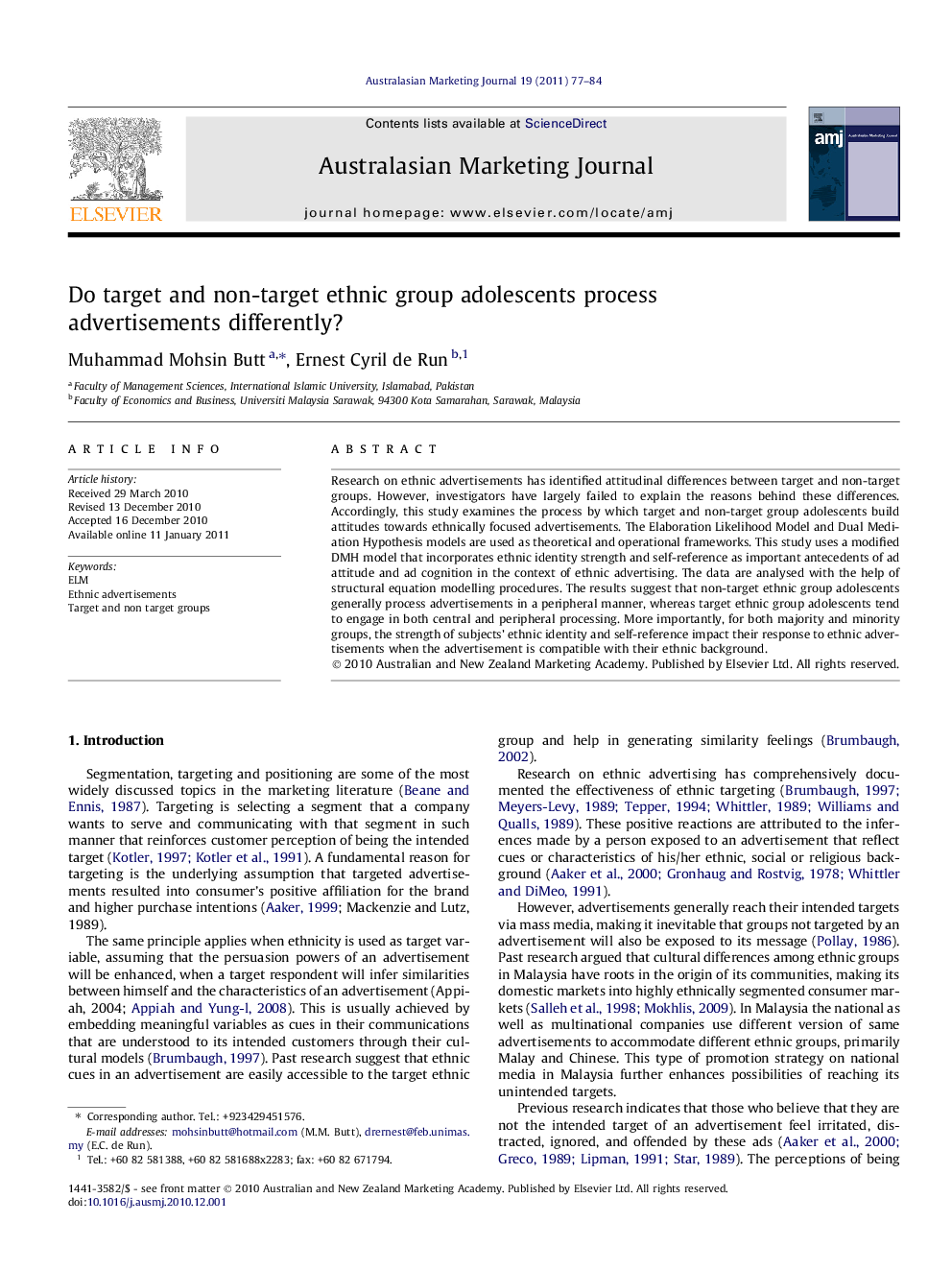| Article ID | Journal | Published Year | Pages | File Type |
|---|---|---|---|---|
| 1027215 | Australasian Marketing Journal (AMJ) | 2011 | 8 Pages |
Research on ethnic advertisements has identified attitudinal differences between target and non-target groups. However, investigators have largely failed to explain the reasons behind these differences. Accordingly, this study examines the process by which target and non-target group adolescents build attitudes towards ethnically focused advertisements. The Elaboration Likelihood Model and Dual Mediation Hypothesis models are used as theoretical and operational frameworks. This study uses a modified DMH model that incorporates ethnic identity strength and self-reference as important antecedents of ad attitude and ad cognition in the context of ethnic advertising. The data are analysed with the help of structural equation modelling procedures. The results suggest that non-target ethnic group adolescents generally process advertisements in a peripheral manner, whereas target ethnic group adolescents tend to engage in both central and peripheral processing. More importantly, for both majority and minority groups, the strength of subjects’ ethnic identity and self-reference impact their response to ethnic advertisements when the advertisement is compatible with their ethnic background.
Research highlights► We examine target and non-target groups’ attitude formation towards ethnic advertisements. ► This study uses DMH model to investigate attitude formation process. ► Ethnic identity strength and self-reference were incorporated as antecedents of Aad. ► The results suggest non-target groups process advertisements in a peripheral manner. ► On the other hand, target groups engage in both central and peripheral processing.
